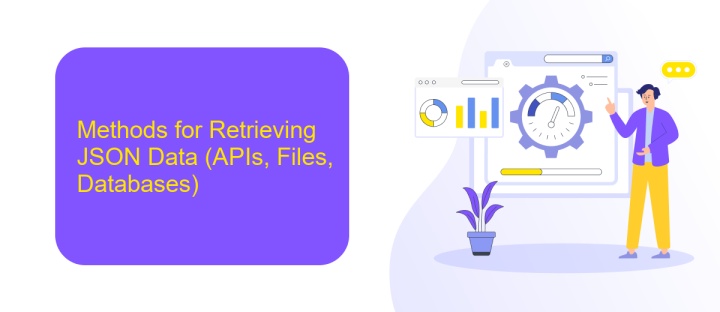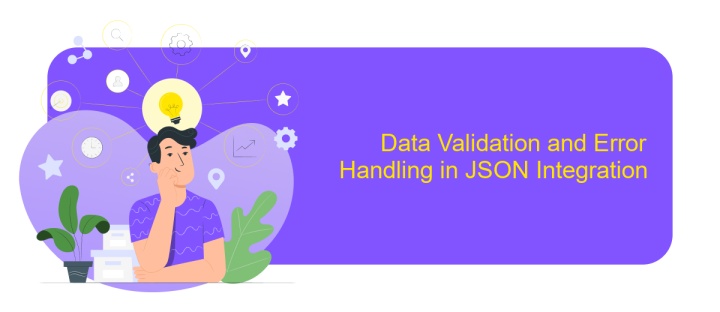JSON Data Integration
JSON (JavaScript Object Notation) has become a cornerstone in data integration due to its lightweight and human-readable format. It facilitates seamless data exchange between diverse systems, making it an essential tool for developers and businesses alike. This article explores the fundamentals of JSON data integration, highlighting its benefits, challenges, and best practices to efficiently manage and transform data across various platforms.
Understanding JSON Data Structures and Formats
JSON, or JavaScript Object Notation, is a lightweight data interchange format that is easy for humans to read and write, and easy for machines to parse and generate. It is primarily used to transmit data between a server and a web application as an alternative to XML. JSON's simplicity and flexibility make it a popular choice for data integration across various platforms and programming languages.
- Objects: Enclosed in curly braces, containing key-value pairs.
- Arrays: Ordered lists of values enclosed in square brackets.
- Values: Can be strings, numbers, objects, arrays, true, false, or null.
- Strings: Enclosed in double quotes, supporting Unicode.
- Numbers: Support both integer and floating-point formats.
Understanding JSON's structure is crucial for effectively integrating data from diverse sources. By utilizing its hierarchical format, developers can represent complex data relationships and ensure seamless data exchange. JSON's widespread adoption in APIs and web services underscores its importance in modern data ecosystems, making it an essential skill for developers working on data-driven applications.
Methods for Retrieving JSON Data (APIs, Files, Databases)

Retrieving JSON data can be accomplished through various methods, each tailored to different sources and requirements. One common method is using APIs (Application Programming Interfaces), which enable seamless data exchange between systems. APIs provide endpoints that allow developers to request and receive JSON data, facilitating integration with third-party applications. This method is particularly useful for dynamic data retrieval from web services and online platforms, ensuring up-to-date information is accessible in real-time.
Another approach is retrieving JSON data from files stored locally or on cloud services. This method is ideal for static data that does not require frequent updates. JSON files can be easily parsed and processed using programming languages like Python or JavaScript. Additionally, databases can be configured to store and manage JSON data, offering structured querying capabilities. Tools like ApiX-Drive can simplify the integration process by automating data retrieval and synchronization across various platforms, enhancing efficiency and reducing manual effort. By leveraging these methods, organizations can effectively harness JSON data for diverse applications.
Parsing and Transforming JSON Data in Your Target System

Integrating JSON data into your target system requires a meticulous approach to parsing and transforming the data to ensure compatibility and functionality. JSON, known for its simplicity and readability, can be parsed using various programming languages that support JSON libraries. The transformation process involves converting the parsed JSON data into a format that aligns with your system's requirements, ensuring seamless integration and data consistency.
- Begin by identifying the JSON structure and the specific data elements required for your target system.
- Utilize a JSON parser available in your programming environment to read and interpret the JSON data.
- Transform the parsed JSON data into the desired format, which may involve mapping fields, converting data types, or restructuring the data hierarchy.
- Validate the transformed data to ensure it meets the target system's specifications and constraints.
- Integrate the validated data into your system, ensuring proper error handling and logging for successful data insertion.
Through careful parsing and transformation, JSON data can be effectively integrated into your target system, enhancing its capabilities and ensuring data integrity. By following a structured approach, you can streamline the integration process and reduce potential errors, ultimately improving system performance and reliability.
Data Validation and Error Handling in JSON Integration

Ensuring data integrity is crucial when integrating JSON data across systems. Data validation serves as the first line of defense against erroneous data, ensuring that the information being processed adheres to predefined formats and constraints. This process involves checking for data types, required fields, and value ranges to prevent data corruption or misinterpretation.
Error handling complements validation by providing mechanisms to manage and recover from errors encountered during data integration. Effective error handling not only logs issues but also enables systems to continue operating smoothly, reducing downtime and maintaining data flow continuity.
- Implement schema validation using tools like JSON Schema to enforce data structure conformity.
- Use try-catch blocks to gracefully handle exceptions and provide meaningful error messages.
- Maintain comprehensive logs of validation errors for troubleshooting and auditing purposes.
- Establish fallback procedures to ensure system resilience in case of data integration failures.
Together, data validation and error handling form a robust framework for JSON integration. By proactively addressing potential issues, organizations can ensure reliable data exchange, enhance system interoperability, and improve overall data quality. This strategic approach minimizes risks and maximizes the value derived from integrated data.
Best Practices and Tools for Efficient JSON Data Integration
Integrating JSON data efficiently requires adherence to best practices and the utilization of appropriate tools. One essential practice is ensuring data consistency and validation. This involves setting up schemas to define the structure and data types within JSON files, which helps prevent errors during data exchange. Additionally, it's crucial to handle errors gracefully by implementing robust error-handling mechanisms to manage unexpected data formats or connectivity issues. Regularly updating and maintaining documentation is also vital to facilitate seamless integration and collaboration between teams.
Utilizing tools specifically designed for JSON data integration can significantly streamline the process. ApiX-Drive is one such tool that offers a user-friendly interface for automating data transfer between different applications and services. It allows users to set up integrations without coding, making it accessible for non-technical users. By leveraging such tools, organizations can efficiently manage data flows, reduce manual intervention, and enhance data accuracy. Ultimately, combining best practices with the right tools can lead to more effective and reliable JSON data integration.
FAQ
What is JSON data integration?
Why is JSON preferred for data integration?
How can I automate JSON data integration processes?
What are common challenges in JSON data integration?
How can I ensure data security during JSON integration?
Time is the most valuable resource for business today. Almost half of it is wasted on routine tasks. Your employees are constantly forced to perform monotonous tasks that are difficult to classify as important and specialized. You can leave everything as it is by hiring additional employees, or you can automate most of the business processes using the ApiX-Drive online connector to get rid of unnecessary time and money expenses once and for all. The choice is yours!

